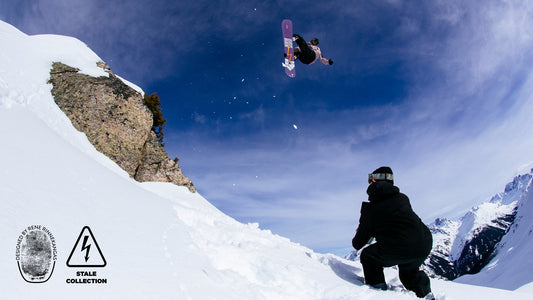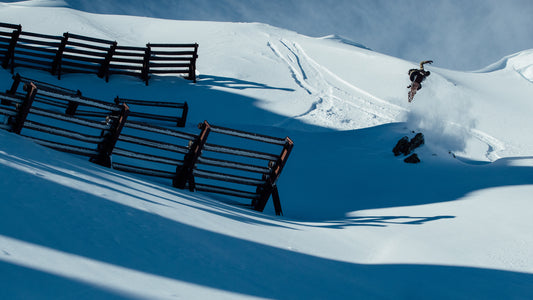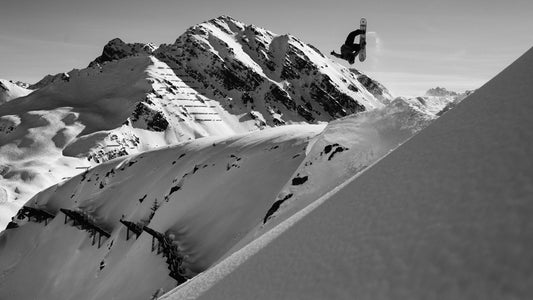Get fixed up for the park

Snowboard bindings, by their nature, are kinda constrictive. They need to keep you fixed to the board and locked in enough that your movement is translated into the edges, after all. But if you live to get airborne, shred rails, bonk obstacles and otherwise get radical, you’ll probably benefit from something that’s tailored towards park riding like a freestyle snowboard binding.
Freestyle Snowboard Binding.
What makes a good freestyle snowboard binding?
This depends slightly on the kind of tricks you do. For most of us, lapping the park means attacking features at a slightly slower speed than you’d take when charging the trails. A softer flex will help you here. Your bindings will feel less twitchy on the approach into that boardslide or kicker, and if you land your trick a little sideways you’re less likely to hook up (stiff bindings, by contrast, control the edge more instantly – which can buck you off). It’s an all-round mellower feel.
Softer bindings like the Vice and the Crux also allow a little extra movement in your lower leg so you can bone out grabs and really lean into presses. If this sounds like your jam, pay close attention to the relative flex ratings and avoid bindings which include carbon in the baseplate and/or highback. As an added bonus, you’ll save money which could be better spent on whatever headwear is cool in the park this year.
On the flipside, not every freestyle rider will be best served by a soft binding. Heavier, more powerful and/or more advanced shredders might still prefer a mid-stiff option like the Katana that offers greater support when you’re bombing into critical takeoffs and sending it deep. The extra response will also come in useful if you’re into riding the halfpipe, where edge control is everything.
What other features should you look for?
Whether you’re a rail technician or ‘go big or go home’ kinda dude, it’s helpful to have some padding built into your freestyle snowboard binding. Make sure your chosen set comes with a footbed and some cushioning around the inside of the highback that will help you soak up heavier landings.
Rome’s binders also feature a shock-absorbent layer underneath the baseplate; on the top-of-the-line Katana and the more aggressive new Cleaver this sub base is made from a material called Duracush that actually reacts to impact at a molecular level. No shit.

When it comes to the baseplate itself, you need something that’s lightweight and strong to get you off the ground repeatedly. After years of tinkering, we’ve settled on Nylon composites.
Our classic FullWrap system (seen on the 390 Boss, the D.O.D. and the Cleaver) delivers pure, balanced power. It’s the no-nonsense, bomb proof option. Freestyle riders looking for a more relaxed, surf-like set-up might want to check out our trademark AsymWrap platform – found, for example, on the Katana, the Crux and the Vice – which has a heel hoop that’s shorter on one side, allowing greater freedom to style out your tricks.

On a similar score, freestyle snowboard bindings often come with a more lightweight and flexible ankle strap that make it easy to butter, press and tweak. At Rome, both our Pureflex and Proflex straps fit this category and are great for park riding, though the latter is a bit more grippy and durable thanks to its next level Aux Tech material.

Finally, it’s essential that any freestyle snowboard binding is comfortable enough to let you launch tricks all day, and the key factor here is fit. The more adjustable it is, the better. Start with the baseplate/heel hoop – can you lengthen or shorten it to match your boot? Move on to strap length (tool-free changes are a useful bonus) and the highback – you should be able to rotate it in line with your edges, while pipe slayers will often crank up their forward lean.
Just as skaters and surfers need to make micro-adjustments with their feet, this kind of customization helps freestyle riders dial in their stance. Our Pivotmount system is a good example. By selecting from up to 8 mounting points for each side of your ankle strap – and 64 positions in total – you can fine-tune the way the ankle strap sits across your boot. Movie it higher for locked-in power, or lower to get loose.
If you want to learn more, we’ve put together a couple of in-depth guides on choosing your stance and fitting your snowboard bindings.
![]()
Bottom line – what are the best freestyle snowboard bindings?
- The average park rider will benefit from a soft binding that works better at low speeds and is more forgiving; powerful freestylers who go big might need the extra support of a stiffer model
- Padding under and over the baseplate, and inside the highback, will help dampen landings
- Lightweight and strong baseplates are best; if you wanna tweak, check out Rome’s AsymWrap platform
- Stretchy straps will help you bone out tricks
- Look for adjustable features that let you customize the fit



